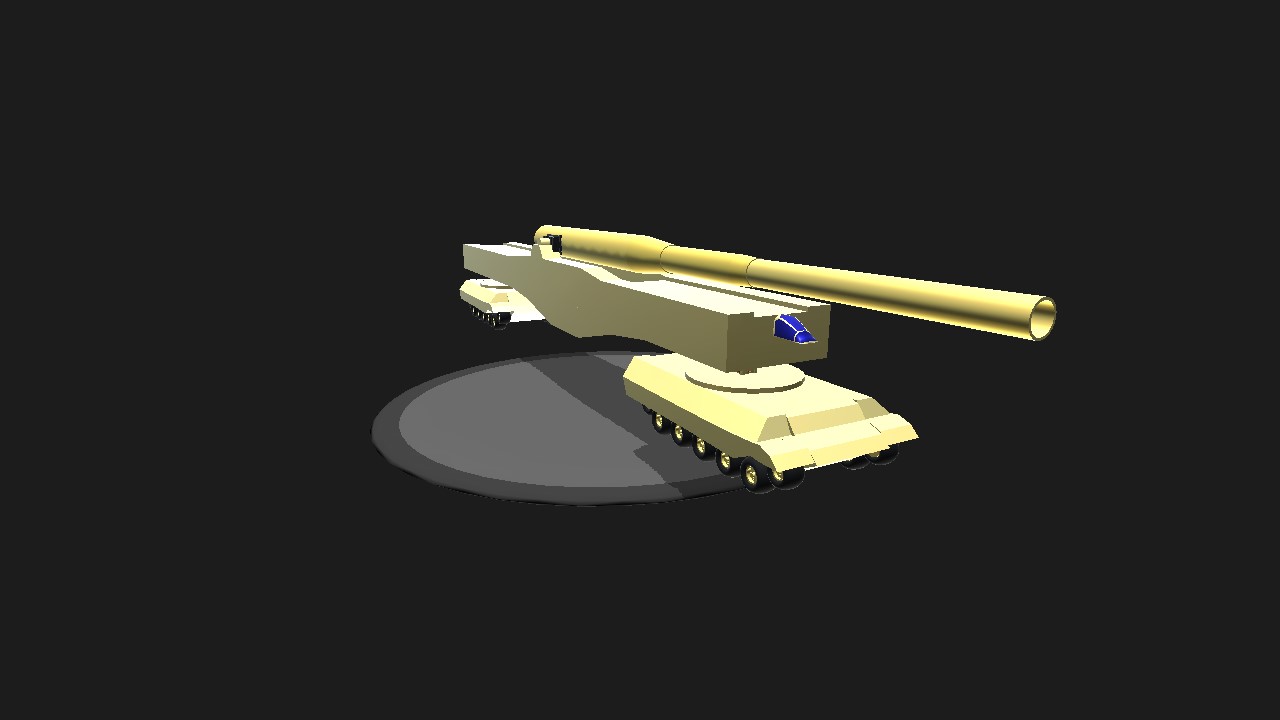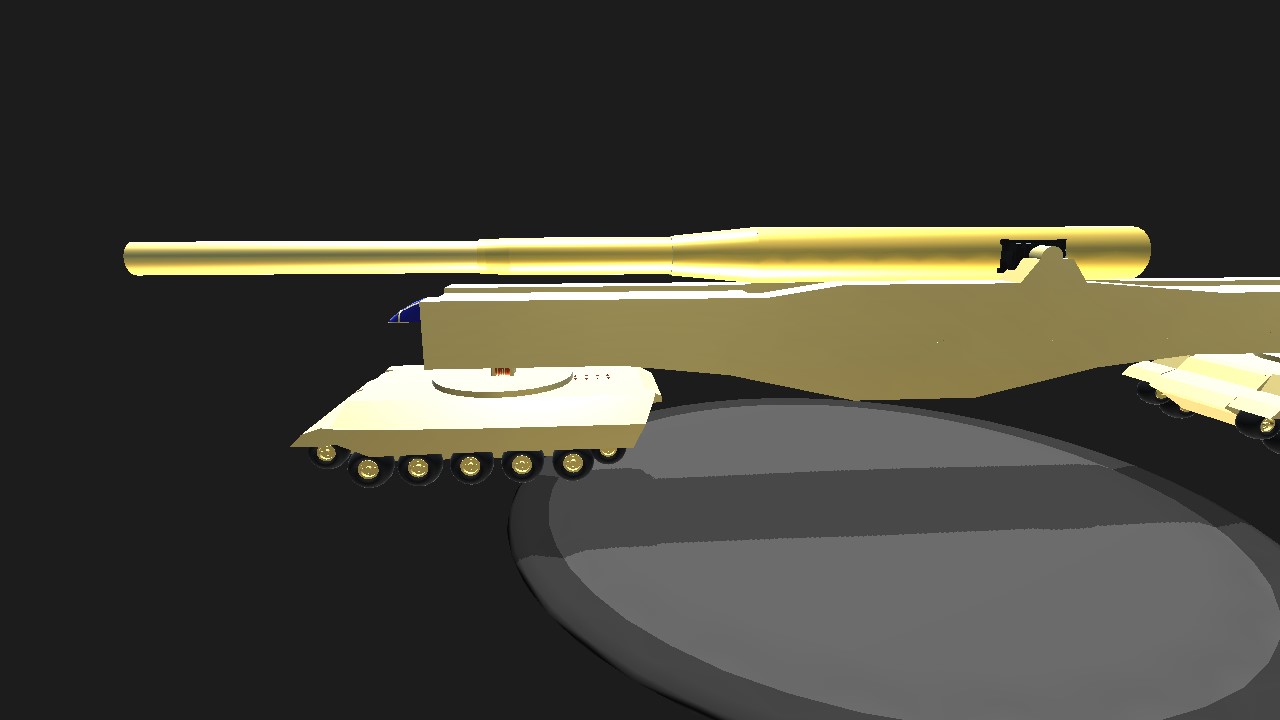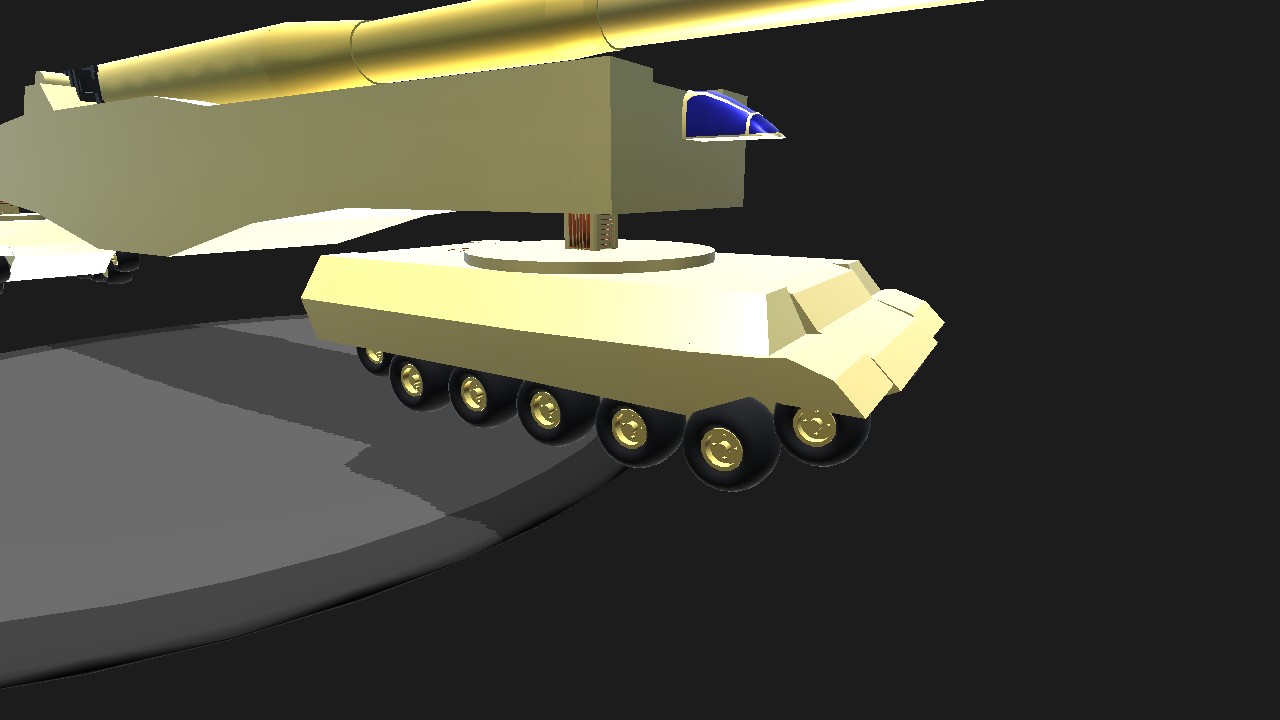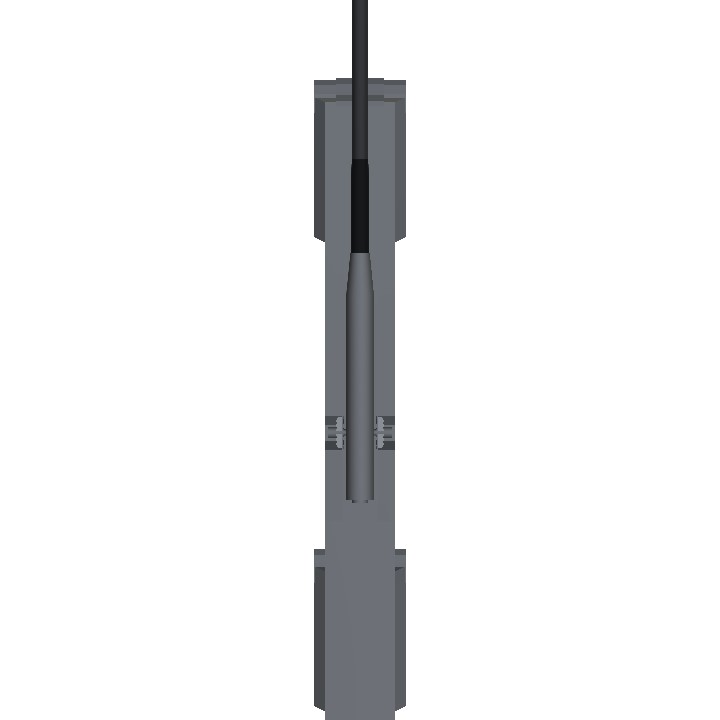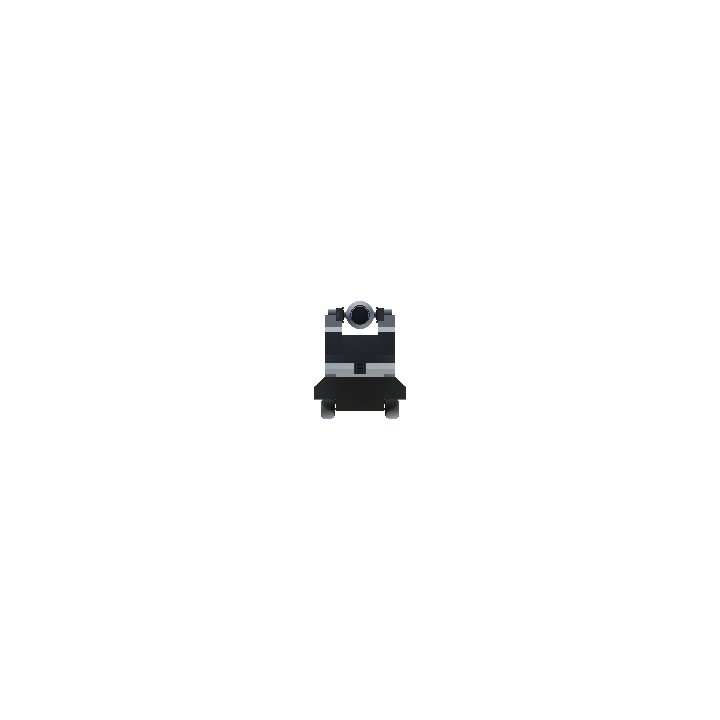As the first design was canceled due to the discontinuation of the intended weapon, and not because it was ridiculous and impractical, Krupp decided to persevere with the tank-based railway gun idea using the 28 cm K 5 instead. The K 5 (sometimes incorrectly referred to as Leopold – this was the name of an individual railway gun rather than the name for this system) was the most successful railway gun of World War II; 25 pieces were built in total. The railway version of the gun weighed 218 metric tons; this number is probably not far off from the weight of the tank-based gun had it been built.
To transport the K 5 Krupp chose the Panzer VI Tiger II chassis. The general construction was similar to that of the first design, however, it seems the second design had even thinner support cylinders. Coupled with the immense weight of the K 5, it is even more unlikely the mechanism for raising the gun into transport position and lowering the gun into firing position would be functional and reliable.
Note: The book ‘Der Panzerkampfwagen Tiger und Seine Abarten’ (Spielberger, 1997) seems to suggest that the gun barrel, gun carriage, and base plate were all transported separately. However, the same book shows the illustration below, which implies that the whole assembly was transported as a single unit. Transporting the weapon in pieces would help overcome the problems of its great size and weight, but would make assembly upon arrival a nightmare. The book also states that a separate Tiger II-based vehicle would bring along “closing pieces” for the gun.
The Gerät 566 Lastenträger 606/5 für K 5/3 (Tiger) would have used a late-war development of the K 5 gun; the K 5 Glatt. The K 5 Glatt had a 31 cm smoothbore gun tube that was designed to fire 136 kilograms (300 lb.) subcaliber fin-stabilized rounds called Pfeilgeschoß up to a range of 120 to 150 kilometers (74.5 to 93.2 miles). This was great enough range to fire on London. However, due to the implementation of the V1 ‘Buzz Bomb’ and V2 missile, the K 5 Glatt fell by the wayside. Only two were built, both in railway configuration.

Specifications
Spotlights
- JwpsAviation 4.5 years ago
General Characteristics
- Predecessor World War II Challenge
- Created On Android
- Wingspan 13.5ft (4.1m)
- Length 105.4ft (32.1m)
- Height 17.3ft (5.3m)
- Empty Weight 557,444lbs (252,852kg)
- Loaded Weight 561,733lbs (254,798kg)
Performance
- Wing Loading 439,839.3lbs/ft2 (2,147,483.6kg/m2)
- Wing Area 0.0ft2 (0.0m2)
- Drag Points 18062
Parts
- Number of Parts 200
- Control Surfaces 0
- Performance Cost 1,123

